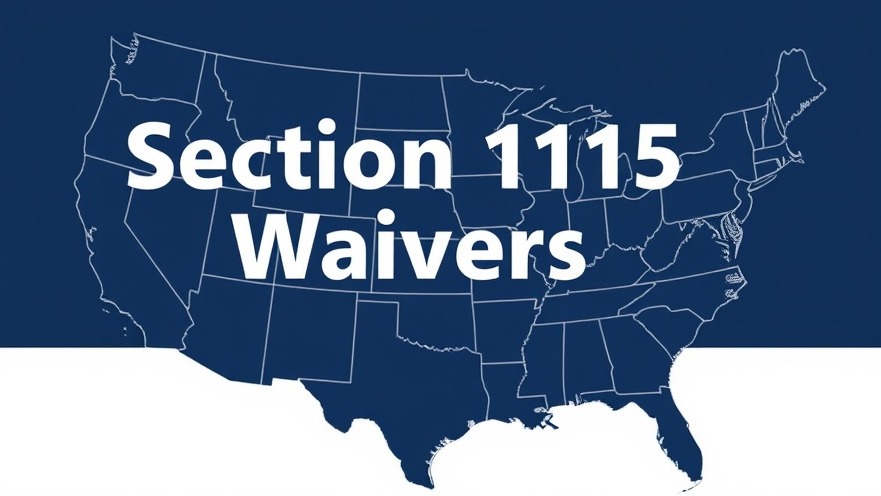
Understanding Section 1115 Waivers and Their Impact on Medicaid
Section 1115 waivers are crucial tools that states can use to explore innovative strategies for delivering health care services and enhancing the Medicaid program. This flexibility allows states to implement approaches that might not strictly adhere to federal regulations, thus providing an opportunity to tailor programs to better meet the needs of their populations. For suburban professionals who prioritize health and wellness, understanding these waivers is essential, as they can directly affect access to care and the quality of services available in their communities.
The Current Landscape of Medicaid Waivers
As of now, many states have submitted proposals or implemented Section 1115 waivers, reflecting diverse approaches to improving Medicaid. Each waiver represents a unique vision for health care, one that potentially influences wellness access for millions. The waivers can include initiatives aimed at expanding coverage, integrating behavioral health, or even tackling social determinants of health such as housing instability. For residents in suburban areas, these changes can have tangible impacts on local health systems and service availability.
How Waivers Affect Health and Wellness
Recent studies have shown that the implementation of various health programs under Section 1115 waivers has led to increased enrollment and improved health outcomes for Medicaid beneficiaries. Programs that foster healthier lifestyles and preventative care are gaining traction, with states recognizing that wellness is intimately linked to long-term healthcare costs. By funding initiatives that encourage fitness trends and preventive health measures, states are not just treating disease but investing in the broader health landscape of their populations.
Future Trends in Medicaid Waiver Approvals
As policymakers continue to refine their approaches to Medicaid, trends suggest an emphasis on value-based care and the incorporation of digital health technologies. This shift aligns perfectly with the interests of suburban professionals, as greater access to innovative care solutions can lead to improved health outcomes. Predictions indicate that future waivers may focus on integrating telehealth services and enhancing flexibility for health providers to keep pace with changing demands from the public.
Diverse Perspectives on Medicaid Waivers
Not everyone agrees on the impacts of Section 1115 waivers. While some advocate for the enhanced flexibility they provide, critics argue that these waivers can lead to increased inequities in health care access. It’s important for health-conscious individuals to consider these arguments critically; understanding the varied perspectives can empower them to engage in discussions about health policy in their communities. This debate will influence how future waivers are structured to ensure they meet the needs of all citizens, regardless of socioeconomic status.
Practical Insights for Navigating Information on Waivers
So how can suburban professionals leverage this information about Medicaid waivers to improve their health outcomes? Keeping informed about ongoing changes to state policies affecting Medicaid can empower individuals to navigate their healthcare options more effectively. Engage with local health advocacy groups, attend public forums, and stay tuned to state announcements about health programs. Understanding these waivers can provide insight into your healthcare options and help you advocate for improvements in your local health system.
 Add Row
Add Row  Add
Add 




Write A Comment